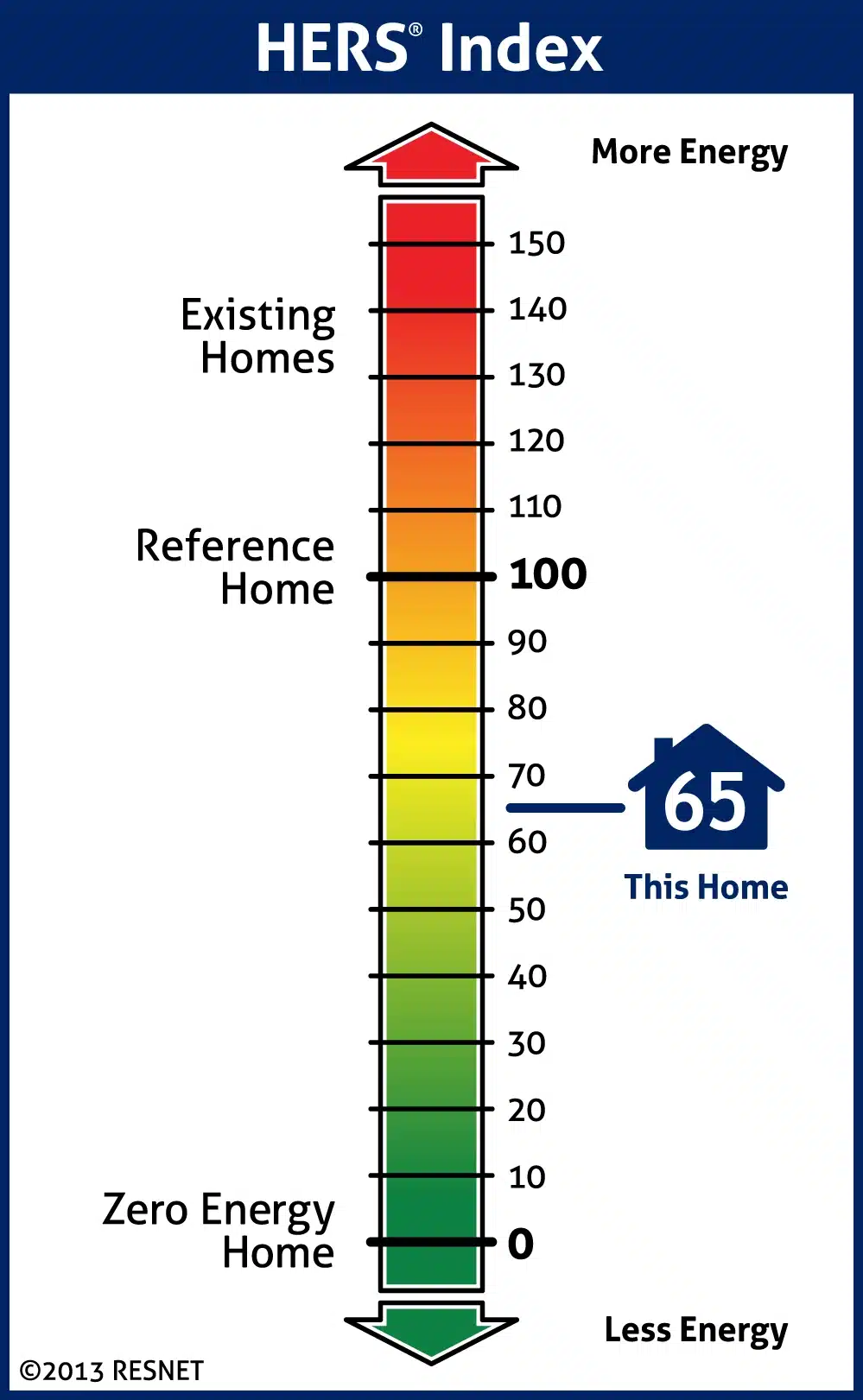What is building performance?
Building performance is simply the way the building (or home) reacts to all the functions we expect from it. This means understanding all the processes that keep an essential building running, i.e., the shell, mechanical systems, and appliances connected to it. The only time these are really considered by owners is when a high utility bill, or one significantly different than the normal, is received.
There are many variables that can affect the efficiency of a home, such as windows; too much sun being let in or not enough; insulation; radiant versus forced-air distribution systems; sealing ductwork; upgrades to appliances or water heating equipment.
Moonlight Architecture knows this and has been able to help clients, who are both building new and renovating an existing home, achieve a highly efficient home with a good HERS Rating and pursuit of achieving net zero energy.
Home Energy Rating System (HERS) – What is it?
HERS stands for Home Energy Rating System and allows homebuilders to receive an energy assessment of their current or future home by having a certified HERS Rater analyze their home’s construction plans and provide the final inspections before a score is presented. Moonlight Architecture works with a third-party verification consultant on every project so that each client receives a HERS score for their home or facility.
The process begins at the start of the design. The home plans, or construction documents, are placed into a model, and the model then assesses the home based on the drawings, systems planned to be in the home, and where the home will be built. From there, Moonlight Architecture can tell our clients an average of what their electric and gas usage for a year will be in their home. This allows the homeowner to consider their options and even direct the energy efficiency of their home before and during construction. At the end of construction, Moonlight Design Studio coordinates with the HERS analyst for the inspection of the home. During this process, the team comes in and closes all the windows and doors of the home, placing it in negative pressure while they run the assessment. This provides the rating for the home. “The tighter the house, the better the efficiency,” says Andy Roehl, Owner, and Principal Architect for Moonlight Architecture.
How is a HERS Rating Beneficial for Your Home?
According to the Resnet HERS Index, energy-efficient homes sell 89 days faster. Additionally, HERS-rated homes sell for a premium, anywhere from 3.5% to upwards of 9% more compared to standard homes. And now, when people look to list their home on the MLS, they are asked to submit the HERS rating of their home so that homebuyers know the efficiency of the home when they are considering properties.
“When you understand the benefits of your home having a HERS rating, clients are normally surprised at how easily it is incorporated into the design,” says Andy. “When done correctly, with the architect and contractor working together, the assessment during the final stages of home-building will not be cumbersome for our clients. We feel like we are not only handing them the keys to their new home, but we’re also handing them an investment in the home they just built.”
Utilizing the HERS Rating process for renovation or new construction has a plethora of health and financial benefits. And the cost-savings over the life of the home are immense. High-performance homes and buildings reduce the instance of pollutants indoors due to better electricity production, producing lower levels of combustion while providing improved ventilation. With these decreases, cleaner air is circulated, decreasing the occurrence of pollutant-cause illnesses such as asthma and allergies.
And remember, high-performance homes equal low maintenance of the home over time. If you are considering building a new home or would like to assess the efficiency of your current home, contact Moonlight Architecture to discuss how we can help.
Image Source, RESNET HERS Index



